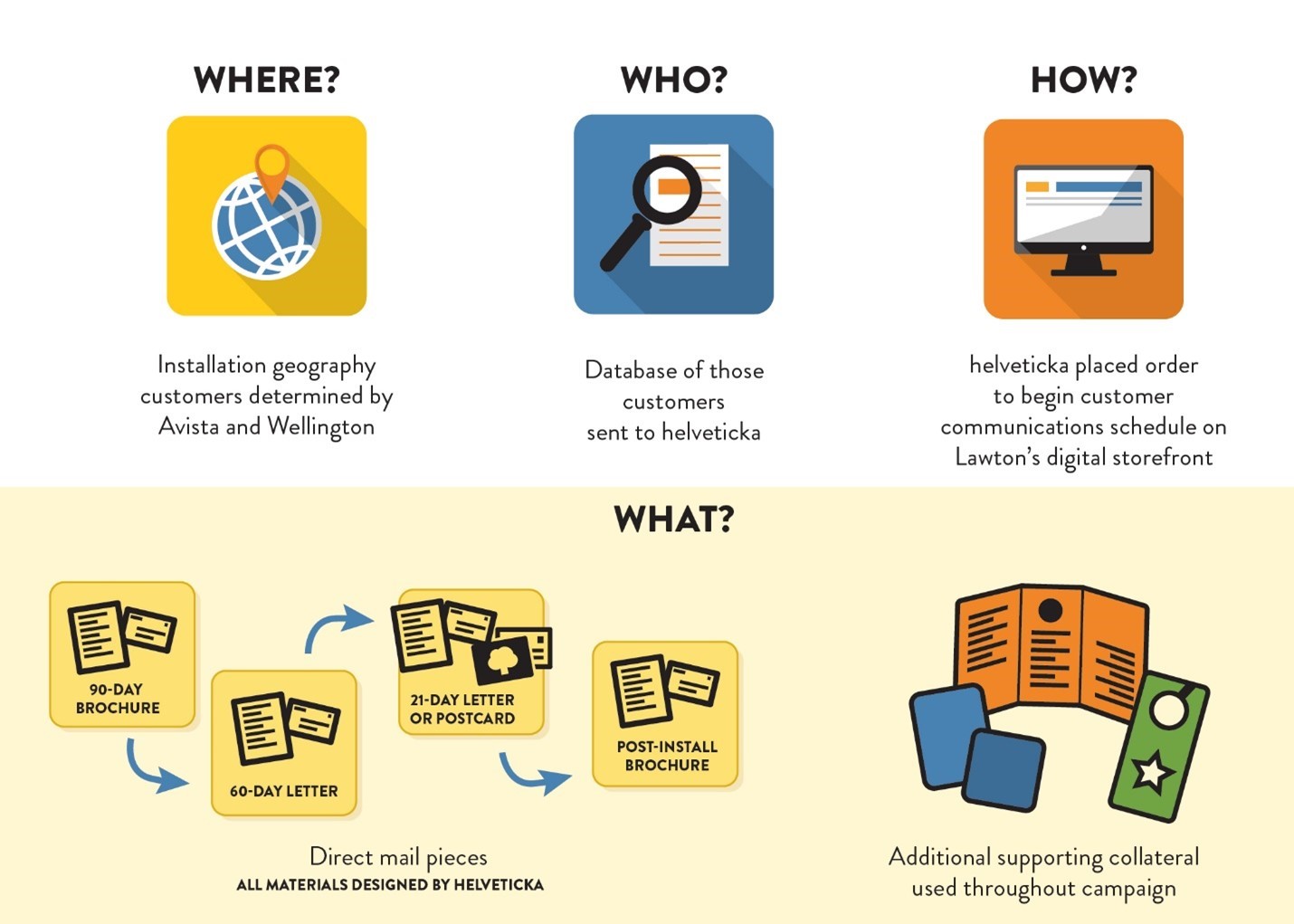Avista Smart Meter Mailing Case Study
Avista’s personalized, phased direct mail series informed and educated customers about the company’s smart meter installation plan.
Overview
Avista’s installation of more than 300,000 smart meters in its Washington service area was a huge undertaking. The two-year project involved replacing old residential and business electric and/or gas meters with new versions developed and made by Itron. The data from those smart meters enables Avista to run a more reliable, efficient power grid, and to help Avista discover power outages faster and react more quickly to repair them. The meters also allow customers to securely track their energy use, in real time, on their smart phones, tablets, or computers – eliminating surprise bills, helping them to understand their consumption habits, and alerting them to any significant increase in activity.
Avista and helveticka had the monumental task of educating its entire customer base of the value and benefits of smart meters, along with communicating the specifics about when and how they would be installed.
Challenge
The complexity and magnitude of the Avista smart meter installation required strategic planning – not only by the installation team, but also by Avista’s communications team. Household installation of a smart meter required communicating the plan clearly and frequently to every one of Avista’s customers. On the scheduled date of installation, customers needed to ensure their existing electricity and/or natural gas meter was free from obstructions, all pets were secure, and access to the property was safe and clear.
What’s more, ensuring power to life-supporting medical equipment and maintaining business operations were just some of the areas critical to a successful outcome for Avista and its customers. Added layers of complexity included ensuring the actual resident (along with a landlord or homeowner) was informed of the scheduled reinstallation time, offering business assessments to determine the least disruption to service, managing those customers who opted out, and adjusting communication and content as needed over the course of the two-year project.
Approach
After a number of discussions and much collaboration, teams from Avista, Wellington (Avista’s installation partner), helveticka (Avista’s creative partner), and Lawton determined that the complexity of this operation required a more deliberately timed, personalized, and fluid communication strategy.
The communications team determined that a segmented, phased approach that closely aligned with the installation schedule would be the most effective. Changes to any communications could quickly be made to clarify questions and clearly communicate timing for each customer as their installation date approached.
The process included Avista and its installation partner, Wellington, determining which set of customers would receive smart meters at what time. The customers were segmented in groups containing a manageable number for one week’s worth of installation. When those customers had been identified, the database of names was sent to helveticka. The 90-day, 60-day, and 21-day pre-installation direct mail series was then initiated by helveticka ordering the appropriate communication material each week through a digital storefront designed by Lawton to streamline the pro

cess and ensure the campaign would kick off and move forward automatically. Achieving the goal of “the right message, at the right time, to the right people, in the right format” was possible by segmenting, personalizing, and automating the printing and delivery of each direct mail piece.
This process also allowed for adjustments based on installation success and ensured that customers were receiving relevant information at the time they needed it.
In addition to the ten versions that made up the direct mail campaign (residential and commercial90-day, 60-day, 21-day, and post-installation), the team produced over a dozen pieces of collateral that answered questions people may have had about the smart meters themselves, their installation, and how they would affect them.
The direct mail letters were personalized with customers’ names and addresses, and included additional information about where the installation crews were scheduled to be working for the upcoming few weeks.
During the height of the campaign, over 13,000 personalized mailings were sent out per week. In all, a total of 970,000 pieces were mailed over the life of the campaign.

